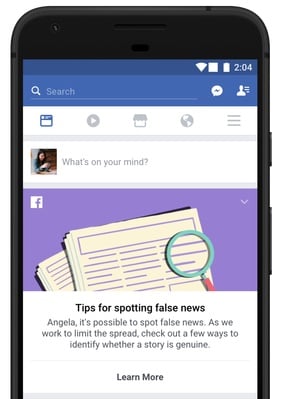
There are several categories of fake news. The following are broad ones: 
 as actual/literal news. e.g. The Onion and Daily Mash.
as actual/literal news. e.g. The Onion and Daily Mash.There is no clear cut between categories, some news articles fall under more than one category.

To understand the Fake News Universe check The Guide To Fake News Terminology

The full list of tips from Facebook on spotting fake news.

Fact Check now available in Google Search.To learn more on this, visit the Google Developers fact check page.

Web Literacy for Student Fact-Checkers by Michael A. Caulfield.

According to the Middle East Media Use Report (2016) younger adults are much more likely to rely on social media as an important source of news (75% 18-24 year olds vs 40% 45 and older) and to consider it reliable (53% vs 30%)